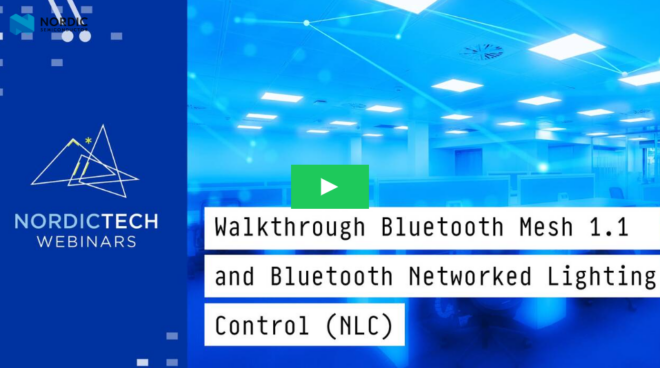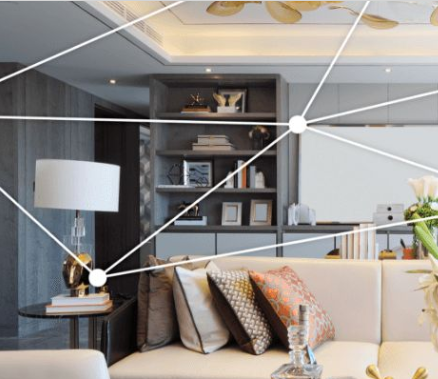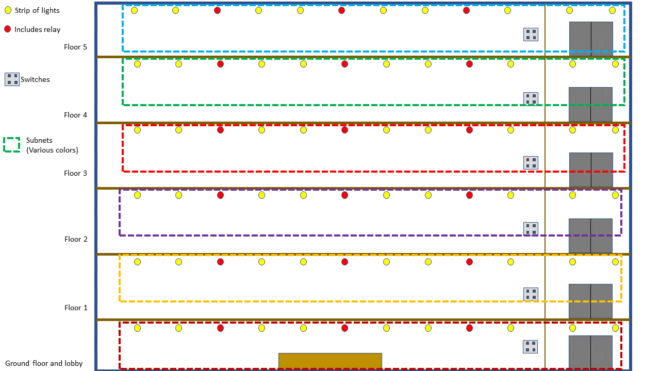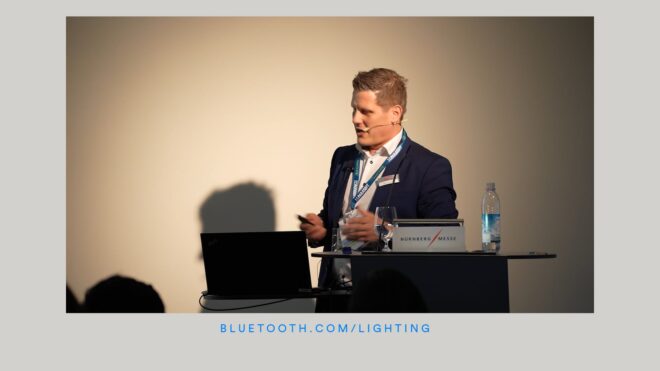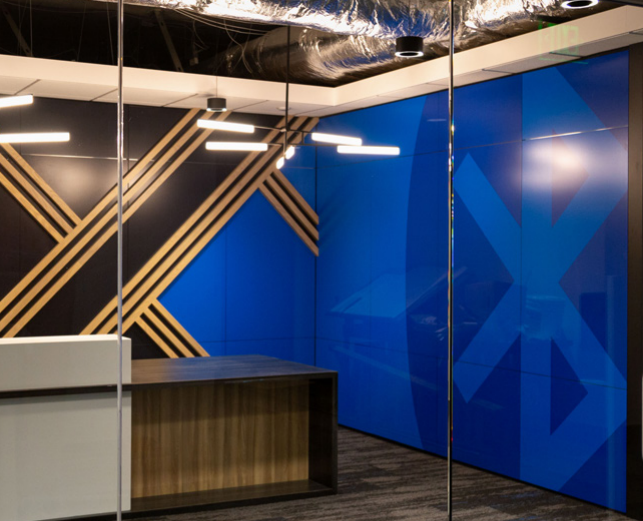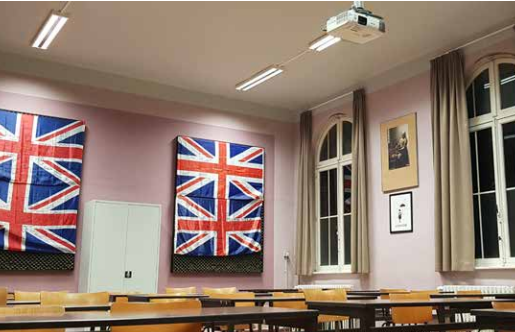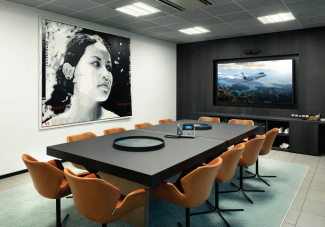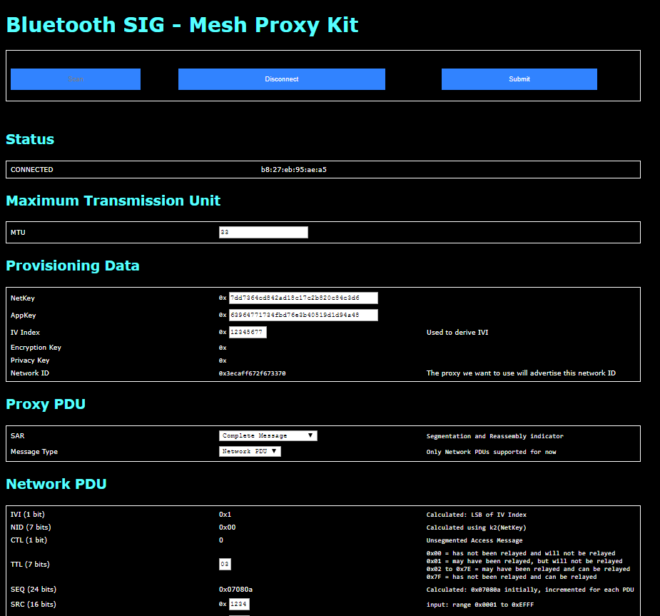This article is an excerpt from a comprehensive technical overview that examines how Bluetooth® Mesh can turn wireless connectivity into a smart lighting wireless platform. Download the full paper here.
Commercial lighting provides a natural grid for connectivity and adding Bluetooth® Mesh networking into the mix offers commercial and industrial facilities new ways to enhance operational efficiency and support new business opportunities. Retailers can offer in-store navigation and customized promotions, hospitals can track patients and equipment, factory floors can perform automated monitoring and maintenance and businesses can intelligently control lighting and temperature while monitoring occupancy and security. With unmatched ubiquity, reliability and interoperability, Bluetooth Mesh networking transforms smart lighting into a wireless connectivity platform.
Wireless Lighting is Technically Challenging

Creating a wireless communications technology which can support reliable, responsive, secure and scalable wireless lighting systems requires a number of challenging problems to be solved. Bluetooth Mesh was designed to address problems of this sort, and to a significant extent, specifically with commercial lighting systems in mind.
Bluetooth Mesh is far more than just a wireless data communications system. It supports common lighting requirements out of the box and ensures interoperability across products from different vendors.
Life gets particularly challenging for the wireless protocol designer when multicast operations involving groups of devices need to be supported. Consider a wireless light switch which operates a set of a dozen lights. Each one of the lights controlled by the switch must come on when the switch is flicked by the user, with no discernible delay, and they must turn on at exactly the same time. This is easy to say but harder to achieve, especially when walls and other environmental factors can attenuate signals or cause interference. It gets even harder when we replace the light switch in our scenario with a wireless dimmer switch, which must provide smooth, responsive and precisely synchronised control of the lights in a way which feels natural and pleasing to the user. Wireless technologies, originally designed for much simpler use cases, such as so-called smart thermostats, will struggle to meet these requirements.
When Bluetooth Mesh was designed, reliability and support for multicast operations involving groups of devices operating in harmony were top on the list of requirements.
Bluetooth Mesh Lighting Features
Bluetooth® Mesh is built on a full stack solution, spanning radio communications at the bottom of the stack and application-specific behaviours at the top. Lighting is regarded as an application in the world of Bluetooth mesh. By including features specifically for lighting systems, as well as other applications, Bluetooth mesh becomes far more than just a wireless data communications system. It supports common lighting requirements out of the box and ensures interoperability across products from different vendors.
All mesh application behaviours are implemented using software modules known as models. A series of standard models have been defined by the Bluetooth Special Interest Group (SIG), and these are selected from to meet a product’s distinct requirements. This makes it easy for lighting products to include other non-lighting features, such as support for sensors, and for those features to work directly with the light’s primary features in a fully integrated manner, without the need for external controllers.
The True Wireless Lighting Opportunity – Lighting as a Platform

In addition to providing several business and technical benefits, installing a Bluetooth® Mesh lighting system equips the building with a wireless network and creates a distributed platform for other wireless building services. Lights and switches are microcontrollers with a Bluetooth Mesh communications capability and software which controls what those devices can do. Software can be upgraded and added to, supporting new Bluetooth capabilities within the lighting system.
Imagine lights which can act as Bluetooth beacons, allowing smartphone applications to help visitors find their way around a building. Imagine a lighting system which can pinpoint the location of people and physical assets within the building. Imagine an automation system which can use occupancy data and personal preferences to orchestrate changes across multiple systems, creating an optimized and personalized building environment. Imagine a lighting system which can collect a vast range of types of data from building sensors and make it available for analysis and real-time use. These are just a few of the capabilities made possible by installing a Bluetooth Mesh lighting system and using it as a platform for other services.
Paving the Way
Bluetooth® Mesh networking brings the multi-vendor interoperability, low power and low latency pedigree of Bluetooth Low Energy (LE) to the world of commercial lighting. It’s designed to allow the creation of reliable, responsive, secure and scalable wireless lighting systems. These systems can evolve to act as a platform for distributed wireless building services that will deliver business benefits by helping establish efficient and thoroughly understood building environments.
![]()
FEATURED DOWNLOAD
Bluetooth Mesh Networking: Paving the Way for Smart Lighting
Bluetooth Mesh networking brings the multi-vendor interoperability, low power, and low latency pedigree of Bluetooth Low Energy to the world of commercial lighting. Discover how this innovative technology can turn wireless connectivity into a smart lighting wireless platform.


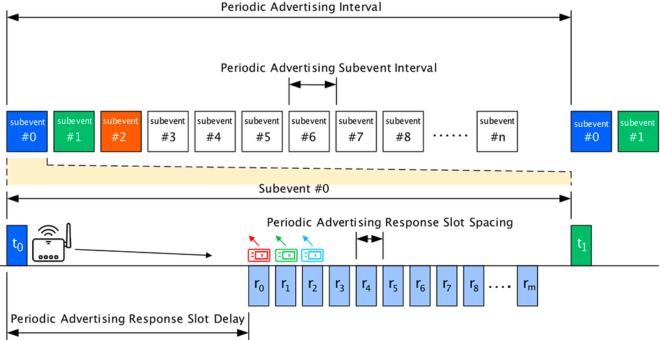

![shutterstock 1653733096[1]](https://www.bluetooth.com/wp-content/uploads/2024/03/shutterstock_16537330961-660x372.jpg)
![Periodic Advertising with Responses[1]](https://www.bluetooth.com/wp-content/uploads/2024/02/Periodic-Advertising-with-Responses1-660x345.png)




